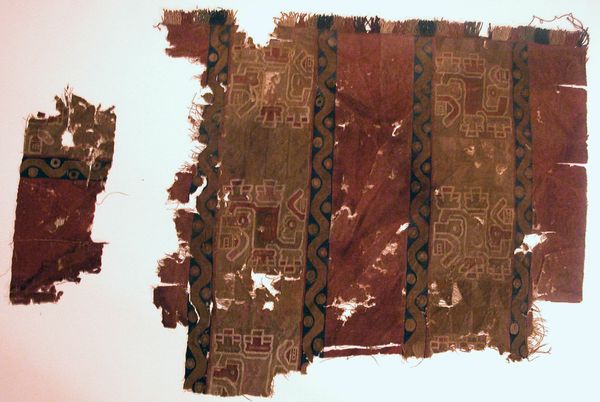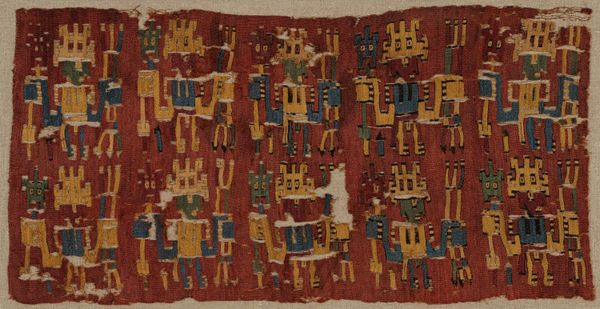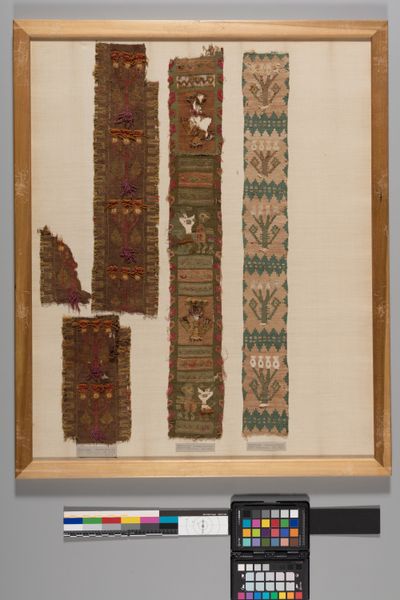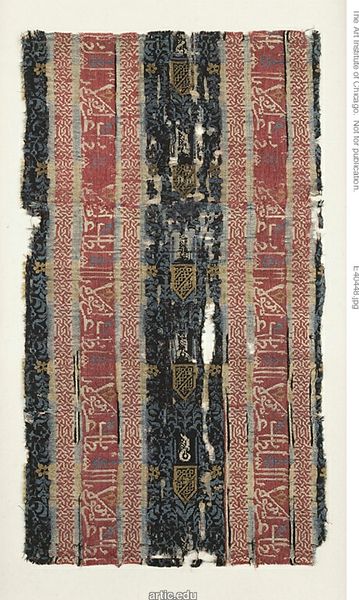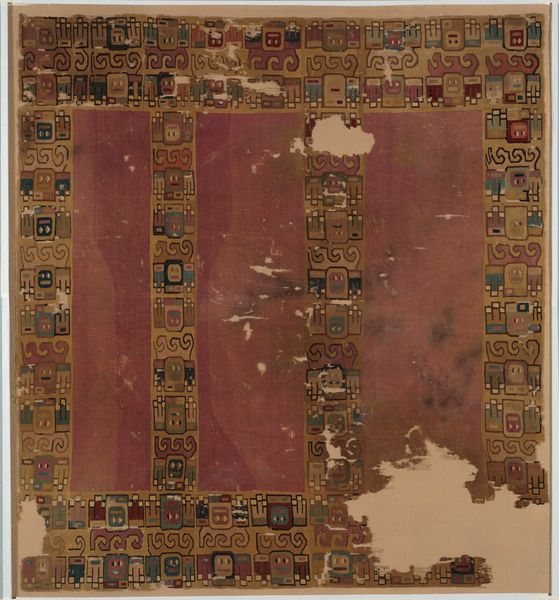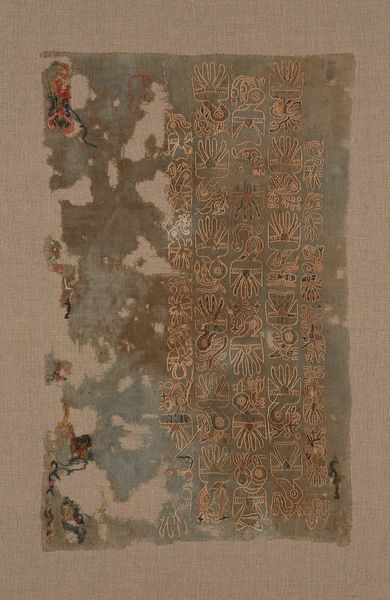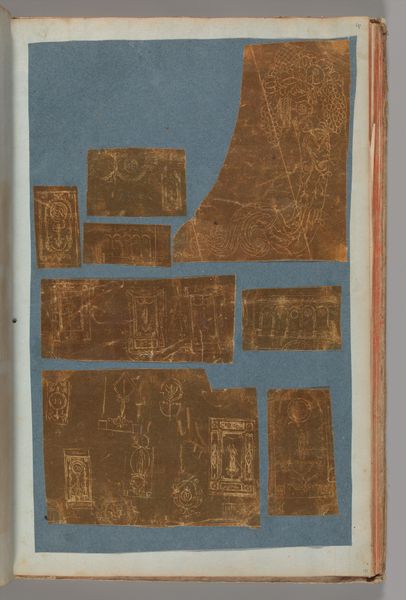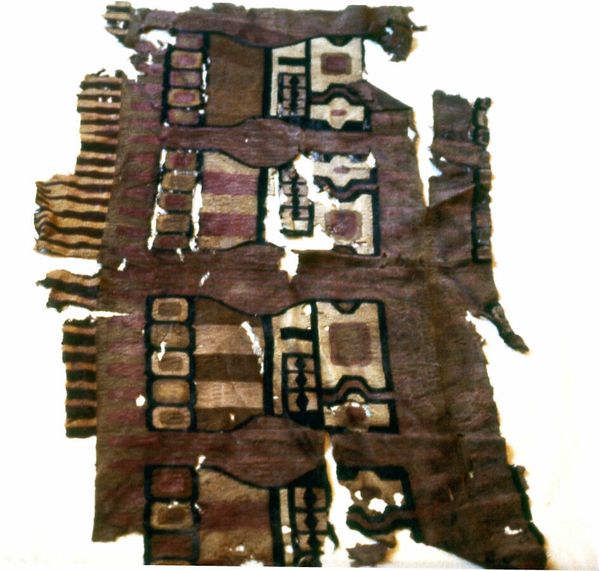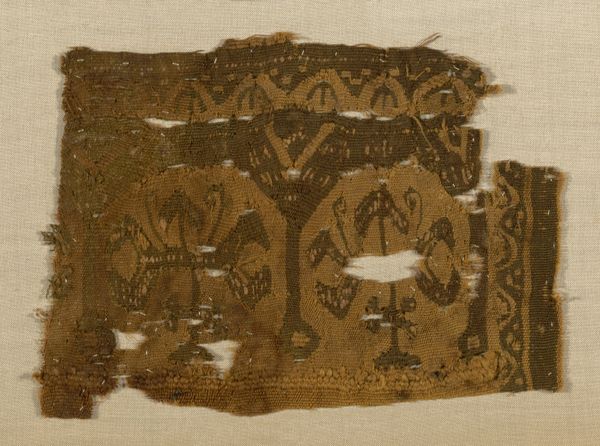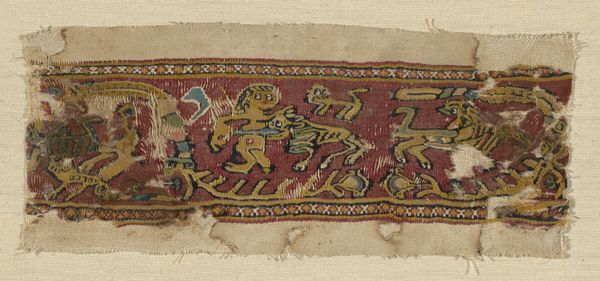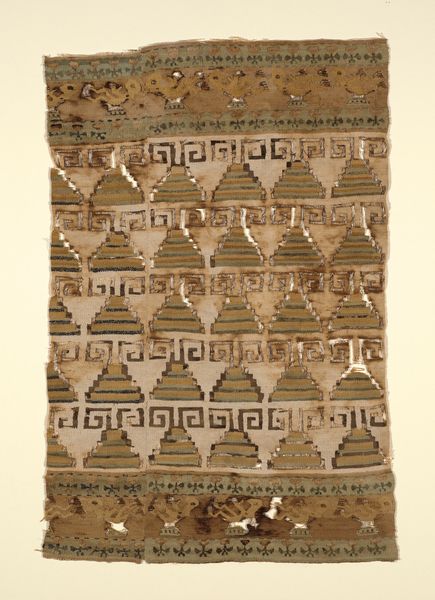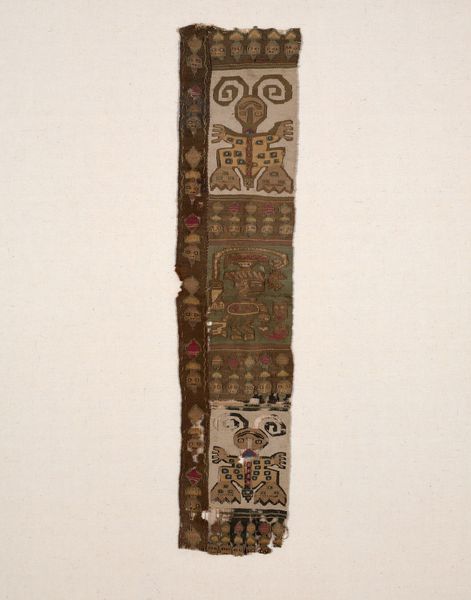
fibre-art, weaving, textile
#
fibre-art
#
weaving
#
textile
#
figuration
#
geometric
#
mixed media
#
indigenous-americas
Dimensions: 45.7 × 47.0 cm (18 × 18 1/2 in.)
Copyright: Public Domain
These textile fragments were woven by the Nazca people in ancient Peru. Created using camelid fibers like alpaca or llama wool, spun into thread and dyed in earth tones, blues and reds, the woven tapestry would have required great skill to produce. The Nazca were known for their sophisticated weaving techniques. These fragments reveal the labor-intensive process of creating such intricate designs. Weaving was a communal activity, with specialized roles for spinners, dyers, and weavers. These skilled individuals would produce textiles that carried social and religious significance. The motifs on these fragments likely represent deities or mythical beings, reflecting the spiritual beliefs of the Nazca people. The act of weaving itself was imbued with meaning, serving as a way to communicate with the divine and record cultural knowledge. By appreciating the materials, techniques, and social context of these textile fragments, we gain a deeper understanding of the Nazca civilization and their worldview. These fragments are far more than just pieces of cloth; they are tangible links to a rich and complex history.
Comments
No comments
Be the first to comment and join the conversation on the ultimate creative platform.
